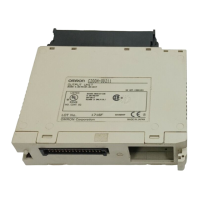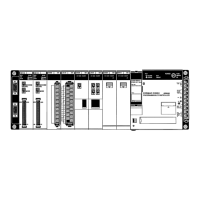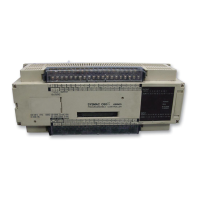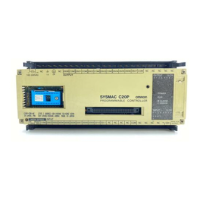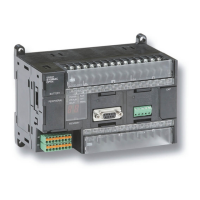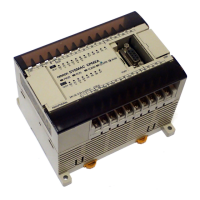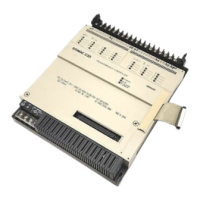Glossary
478
bit designator An
operand that is used to designate the bit or bits of a word to be used by an
instruction.
bit number A
number that indicates the location of a bit within
a word. Bit 00 is the rightmost
(least-significant) bit; bit 15 is the leftmost (most-significant) bit.
buffer A temporary storage space for data in a computerized device.
building-block PC
A PC that is constructed from individual
components, or “building blocks”. With
building-block PCs, there is no one Unit that is independently identifiable as a
PC. The PC is rather a functional assembly of components.
bus bar The
line leading down the left and sometimes right side of a ladder diagram. In
-
struction
execution proceeds down the bus bar
, which is the starting point for all
instruction lines.
call A
process by which instruction execution shifts from the main program to a sub
-
routine. The subroutine may be called by an instruction or by an interrupt.
carry flag A
flag that is used
with arithmetic operations to hold a carry from an addition or
multiplication
operation, or to
indicate that the result is negative in a subtraction
operation. The carry flag is also used with certain types of shift operations.
clock pulse A
pulse available at a certain bit in memory for use in
timing operations. V
arious
clock pulses are available with different pulse widths.
clock pulse bit A
bit in memory that supplies a pulse that can be used to time operations. V
ari-
ous
clock
pulse bits are available with dif
ferent pulse widths, and therefore dif
fer-
ent frequencies.
common data Data
that is stored in the LR Area of a PC and which is shared by other PCs in the
same the same system. Each PC has a specified section of the LR Area allo-
cated to it. This allocation is the same in each LR Area of each PC.
condition An
message placed in
an instruction line to direct the way in which the terminal
instructions,
on the right side, are to be executed. Each condition is assigned to a
bit
in memory that determines its status. The status of the bit assigned to
each
condition
determines, in turn, the execution condition for each instruction up to a
terminal instruction on the right side of the ladder diagram.
constant An operand for which the actual numeric value is specified by the user, and
which is then stored in a particular address in the data memory.
control bit A
bit
in a memory area that is set either through the program or via a Program
-
ming Device to achieve a specific purpose, e.g., a Restart bit is turned ON and
OFF to restart a Unit.
Control System All
of the hardware
and software components used to control other devices. A
Control
System includes the PC System, the PC
programs, and all I/O devices
that are used to control or obtain feedback from the controlled system.
controlled system The devices that are being controlled by a PC System.
control signal A signal sent from the PC to effect the operation of the controlled system.
counter A dedicated group of digits or words in memory used to count the number of
times a specific process has occurred, or a location in memory accessed
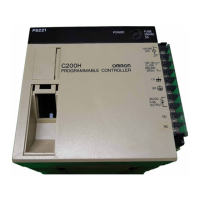
